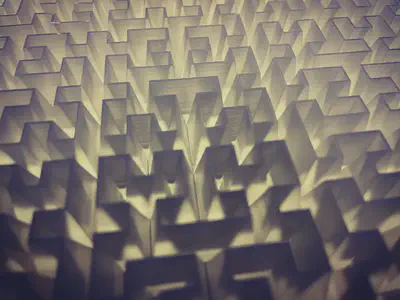
Projects
Motivated by various science goals in observational cosmology, we are engaged in projects that involve (in no particular order) high-performance computing, data analysis, optical calibration techniques, cryogenics, optical modeling, RF simulations, and material development. We tailor project involvement for new members joining the group based on their interests, experties, and desired career paths.
Preamble
We study cosmology, astrophysics, and fundamental physics through observations of the microwave sky. The physical processes that took place in the first epochs in the history of our universe have left an imprint in a 2.7-Kelvin blackbody radiation field that permeates our universe, known as the cosmic microwave background (CMB). During the last 50 years, by carefully observing this radiation with increasingly sensitive instruments, we have succeeded in extracting intricate cosmic detail and established a remarkably successful model of the universe.
There are lots of great introductions to the field, here is one example: How Ancient Light Reveals the Universe’s Contents
Future experiments mapping the cosmic microwave background are designed to revolutionize our understanding of the infant universe, the standard model of particle physics, structure formation, and the nature of dark matter. A key effort involves constraining or detecting the energy scale of cosmic inflation. A detection would mark a watershed moment in cosmology and high-energy physics, but in order to push constraints significantly past current limits, we need a dramatic change in instrument characterization capabilities — the primary focus of CMBeam.
Motivated by these fundamental science themes, our research group is engaged in multiple experimental projects, including experimental collaborations such as SPIDER2, Taurus, the Simons Observatory, and the LiteBIRD satellite:
Optical calibration and cryogenic testing
Through funding from the European Research Council, the Icelandic Research Council, and the University of Iceland (Háskóli Íslands or HÍ for short), we are setting up a new research infrastructure at HÍ. The infrastructure includes various coherent microwave sources in the 40-400 GHz frequency range, a custom anechoic chamber (see post), some robotic arms (see arXiv:2407.04805) , a vector network analyzer, and a custom cryostat that accommdates small to medium-size refractor telescopes (see arXiv:2407.04613) and reimaging optics. This new lab is being devloped with current and future-generation CMB experiments in mind, including CMB experiments such as the balloon-borne experiment Taurus and the LiteBIRD satellite. These CMB experiments give rise to multiple projects in design and testing of novel optical components.

Time-domain simulations using HPC
The science goals of future CMB experiments, in particular 4th-generation satellites planning to supersede Planck, call for an unprecedented control of systematic effects. A significant population of potential systematics effects is related to optics. The CMB community is therefore particularly interested in understanding how best to design mm-wavelength telescopes that can observe the CMB without generating false B-mode signals that would prevent us from reaching our science goals.
For this purpose, our group develops and maintains an advanced beam convolution algorithm called beamconv (github link) and a large component of our work is devoted to the development of realistic optical models for mm-wavelength telescopes. With accurate models, we can understand how optical non-idealities limit our ability to study minute polarization signals in the cosmic microwave background. Members of our group have recently written a few papers on this topic (see arXiv:1809.05034, 1911.13153, and 2012.10437), but there are lots of directions that we have yet to explore. Alexandre Adler, a recent PhD graduate from our group, is now working at Berkeley to advance a code called TOAST, which is motivated by similar goals.
Data analysis
We are also developing algorithms and code libraries for the calibration of the Simons Observatory (SO) which is currently being deployed in the Atacama Desert. Nadia Dachlythra recently wrote a paper that summarizes our efforts to calibrate the SO Small Aperture Telescopes. We are continung this calibration work from the University of Iceland.
Material development
In work funded by the Swedish Space Agency, we are conducting R&D development of metamaterial microwave absorbers. We are using state-of-the-art continuous wave Terahertz spectroscopy systems to design materials that absorb 99.999% of all incoming microwave radiation. As part of this effort, we are working to understand how design features such chemical composition, metamaterial antireflection coatings, etc. impact the integrated reflectivity of our materials.
Our first results from that work are summarized in 2407.05512. Stay tuned for further results.

If you are a student at the University of Iceland want to discuss the science of the cosmic microwave background, or any other science topic for that matter, please do not hesitate to come find us.